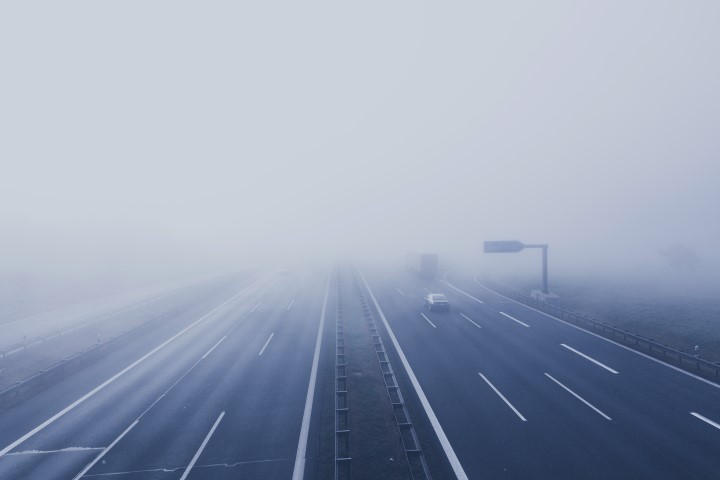
Sometimes, no matter what the weather is like or what time of day it is, we have to get out on the road to get where we’re going. The trouble is, poor visibility can make it difficult to drive safely. In fact, many car accidents are caused by drivers operating their vehicle at an unsafe speed for the prevalent weather. However, just because it’s dark or foggy outside doesn’t mean you can simply quit driving. That’s why we’ve put together some tips today to help you drive safely even in low visibility conditions.
Tips For Driving Through Dense Fog
Fog is one of the most dangerous conditions when it comes to visibility because it can come up out of nowhere and be so thick you can’t see two feet in front of your vehicle. That’s why the utmost caution is necessary to travel through dense fog safely.
Stay Alert
Because you can’t exactly rely on your eyes as well in dense fog, it’s important to stay completely alert while driving. Turn down the radio and make sure you keep an ear out for other vehicles. Watch your speed and take things slow while you drive so that you have time to react.
This includes not just reducing your rate of speed, but giving yourself time to break slowly too. Slamming on the breaks in the middle of a patch of fog only makes the condition worse for other drivers who may not be able to see you either so avoid traveling fast and abrupt stops while listening for other vehicles just as well as looking for them.
Use Your Lights Properly
Fog lights exist on your vehicle for a reason. Many drivers instinctively want to turn on their high beam headlights in fog, in order to see better, but this actually doesn’t work. The best way to improve your visibility is with your standard headlights and your fog lights. The goal is to make the road and your surroundings visible without potentially blinding drivers in front of you. Remember you also have to worry about reflection when it comes to using your lights.
Tips For Driving in Rain and Snow
Rain and snow are a bit different than other conditions because it’s not necessarily how much light that you have that is the problem with being able to see.
Drive Slow and Be Safe
In heavy rain, make sure to use your windshield wipers on high and drive slowly to avoid possibly hitting another vehicle. In either condition, keep your speed reduced and look for buildups of snow or rain water as these can both be dangerous to pass through. If the area looks unsafe for your vehicle, turn around and go another way or wait for the weather to pass if it seems like it’s going to let up
Be Mindful of Changing Conditions
The most important thing to do if you’re driving in rain or snow and you realize that you can’t see is to make the determination whether it’s a good idea to keep going to turn around and give up until the weather conditions improve. When you add problems like slick roads and ice to low visibility, you create conditions that aren’t safe to drive in.
Keep an eye on your surroundings and on the weather report. Even visibility isn’t that poor when you start out, it may get worse as the weather progresses, and it’s always a good idea to err on the side of caution.
Final Thoughts
Getting where you need to go is often very important, but if it’s a choice between driving in low visibility conditions and being a bit late, it’s always better to go slow, follow these tips, and save that trip for another day if things get too hazardous.










